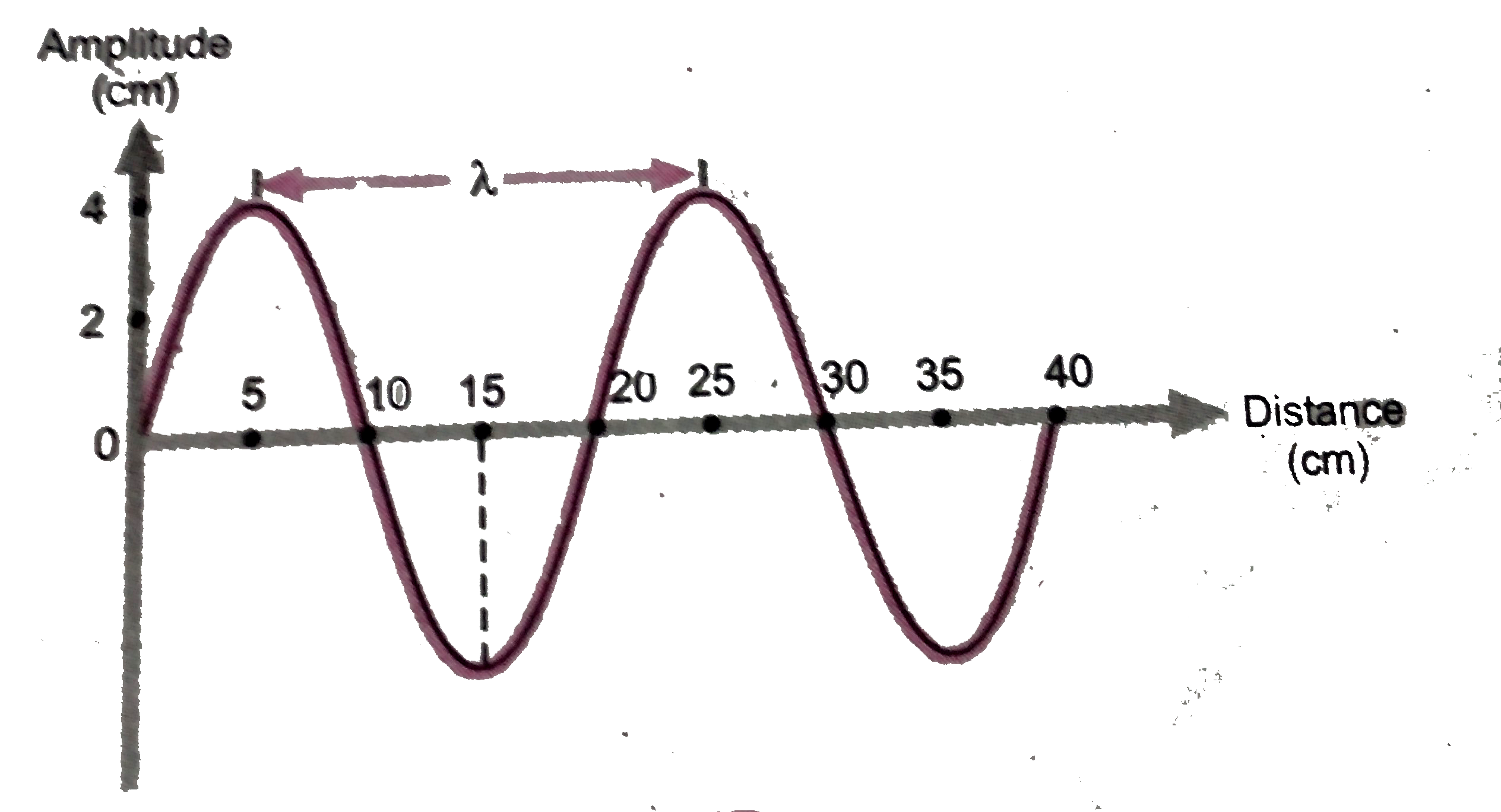Consider the wave y=(5mm)sin[(1cm−1)x−(60s−1)t]. Find the amplitude, b. the wave number, c the wavelength d. the frequency e. the time period and f. the wave velocity.Solution in Tamil
Comparing the given equation with equation (15.15, we find
a amplitude A=5mm
b. Wave number k=1cm−1
c. wavelength λ=2πk=2πcm
d=equencyv=ω2π602πHz
=30πHz
e. time period T=1v=π30s
f.wavevelocityu=vλ=60cms−1
Topper's Solved these Questions
- WAVE MOTION AND WAVES ON A STRINGBook:HC VERMAChapter:WAVE MOTION AND WAVES ON A STRINGExercise:Worked out Examples
Explore 10 Videos
- WAVE MOTION AND WAVES ON A STRINGBook:HC VERMAChapter:WAVE MOTION AND WAVES ON A STRINGExercise:Question for short Answer
Explore 8 Videos
- THE FORCESBook:HC VERMAChapter:THE FORCESExercise:Exercises
Explore 12 Videos
- WORK AND ENERGYBook:HC VERMAChapter:WORK AND ENERGYExercise:Exercises
Explore 64 Videos
Similar Questions
The displacement of a particle of a string carrying a travelling wave is given by y=(3.0cm)sin6.28(0.50x−50t), where x is in centimetre and t in second Find (a) the amplitude, (b) the wavelength, (c ) the frequency and (d) the speed of the wave.
View SolutionYou are walking along a seashore and a mild wind is blowing. Is the motion of air a wave motion ?
View SolutionThe gravitational force acting on a particle of 1 g due to a similar particle is equal to 6.67×10−17N. Calculate the separation between the particles.
View SolutionThe mass of a cyclist together with the bicycle is 90 kg. Calculate the work done by cyclist if the speed increases from 6km/h to 12 km/h.
View SolutionConsider the wave y=(5mm)sin[1cm−1x−(60s−1)t]. Find (a) the ampitude, (b) the angular wave number, ( c ) the wavelength, (d) the frequency, (e) the time period and (f) the wave velocity.
View Solutionshows a snapshot of a wave-form of frequency 50Hz. For this wave motion, find
(a) wavelength
(b) amplitude
( c) velocity.
 .
.
View SolutionIn the given progressive wave y=5sin (100pit-0.4pix) where y and x are in m, t in s, what is the (a) amplitude (b) wavelength (c) frequency (d) wave velocity (e) particle velocity amplitude.
View SolutionConsider the wave y=(10mm)sin[(5πcm−1)x−(60πs−1)t+π4]. Find (a) the amplitude (b) the wave number (c) the wavelength (d) the frequency f the time period and (f) the wave velcity (g) phase constant of SHM of particle at x=0.
View SolutionThe equation of a progressive wave is y= 1.5sin(328t-1.27x) . Where y and x are in cm and t is in second. Calcualte the amplitude, frequency, time period and wavelength of the wave.
View Solutionएक डोरी पर जाती ज्यातरंग (since wave) का समीकरण है
y=(5mm)cos[(1cm−1)x−(60s−1)t].
ज्ञात करें (a) कणों का आयाम, (b) तरंगदैर्ध्य , (c)आवृत्ति, (d) आवर्तकाल , (e )तरंग की चाल
View Solutionएक प्रगामी तरंग का समीकरण y=0.5sin2π(t−0.005x) है , जहां y व् x मीटर तथा t सेकण्ड में दिये गये हैं। तरंग की आवृत्ति, आयाम, तरंगदैर्घ वेग ज्ञात कीजिए।
View SolutionA progressive wave is represented by an equation y=5sin(80πt−0.5πx), where x, y are in 'm' and 't' in 's'. Find (a) amplitude (b)wavelength (c ) frequency (d) velocity of the wave.
View SolutionThe product of which of the following is equal to the velocity of light Wavelength and wave number Wavelength and frequency Frequency and wave number Wavelength and amplitude
View SolutionA wave travelling along a string is given by y(x,t)=20sin2π(t−0.003x) x, y are in cm and t is in seconds.
Find the amplitude, frequency, wavelength and velocity of the wave.
View SolutionIn the given progressive wave y=5sin (100pit-0.4pix) where y and x are in m, t in s, what is the (a) amplitude (b) wavelength (c) frequency (d) wave velocity (e) particle velocity amplitude.
View SolutionFor a wave described by y=0.5sin(x−60t)cm, find (i) amplitude (ii) wave-vector (iii) wavelength (iv) angular frequency and frequency (v) periodic time (vi) speed of wave.
View Solution